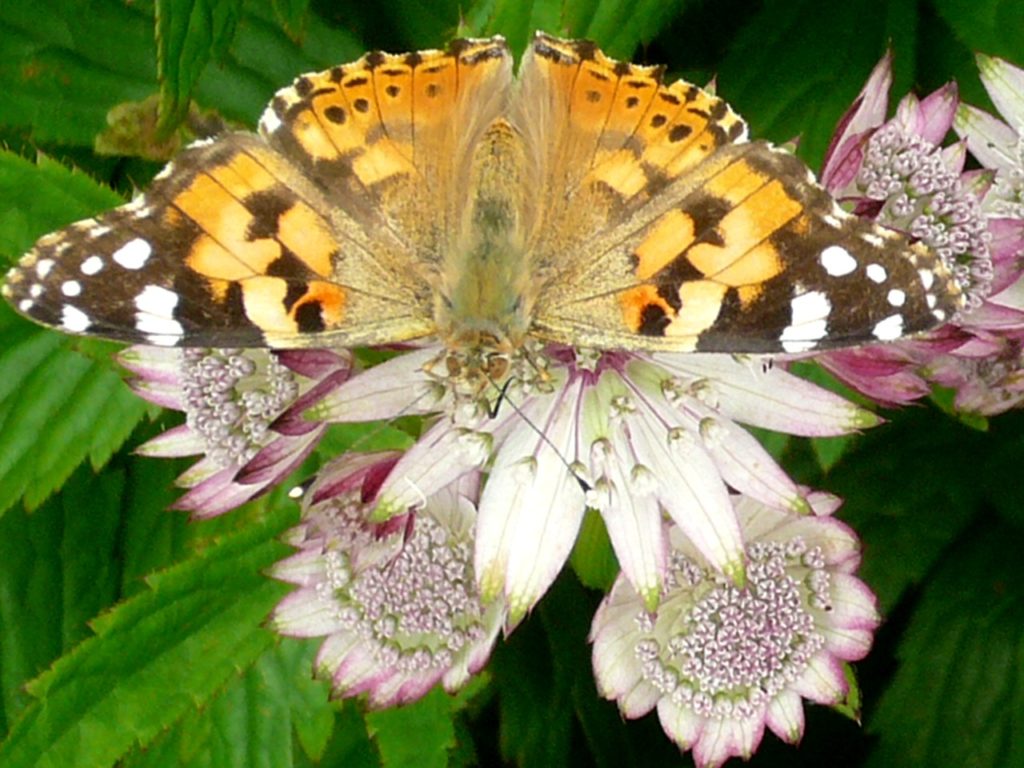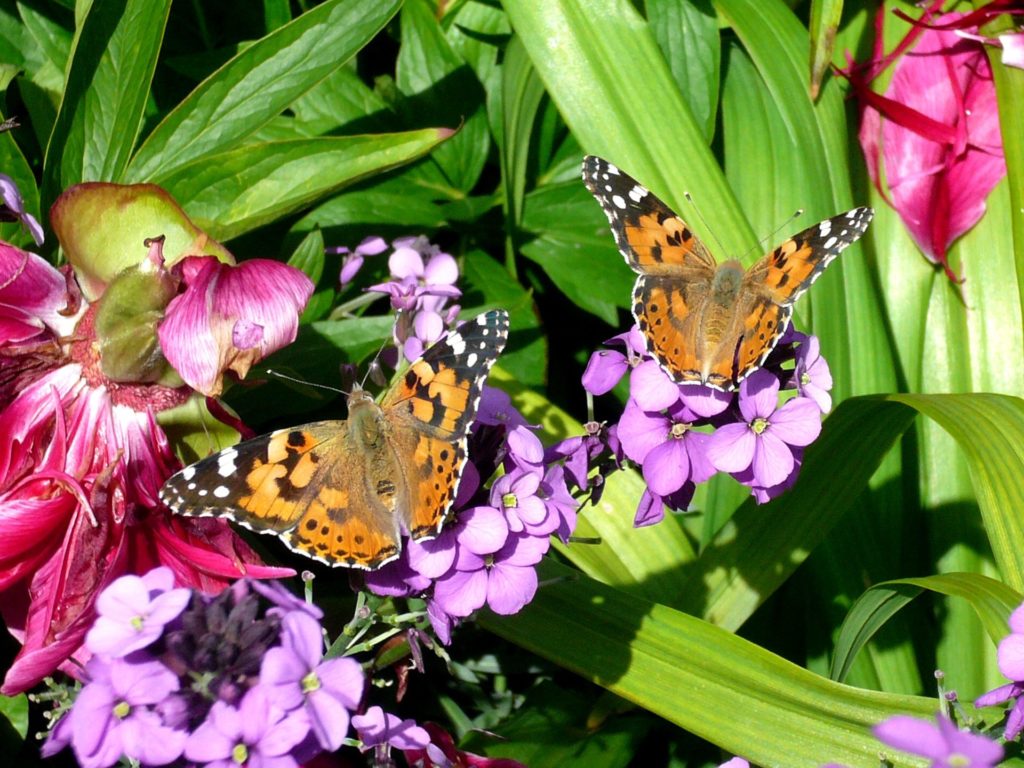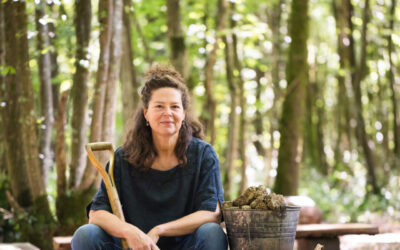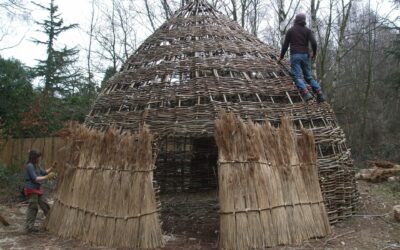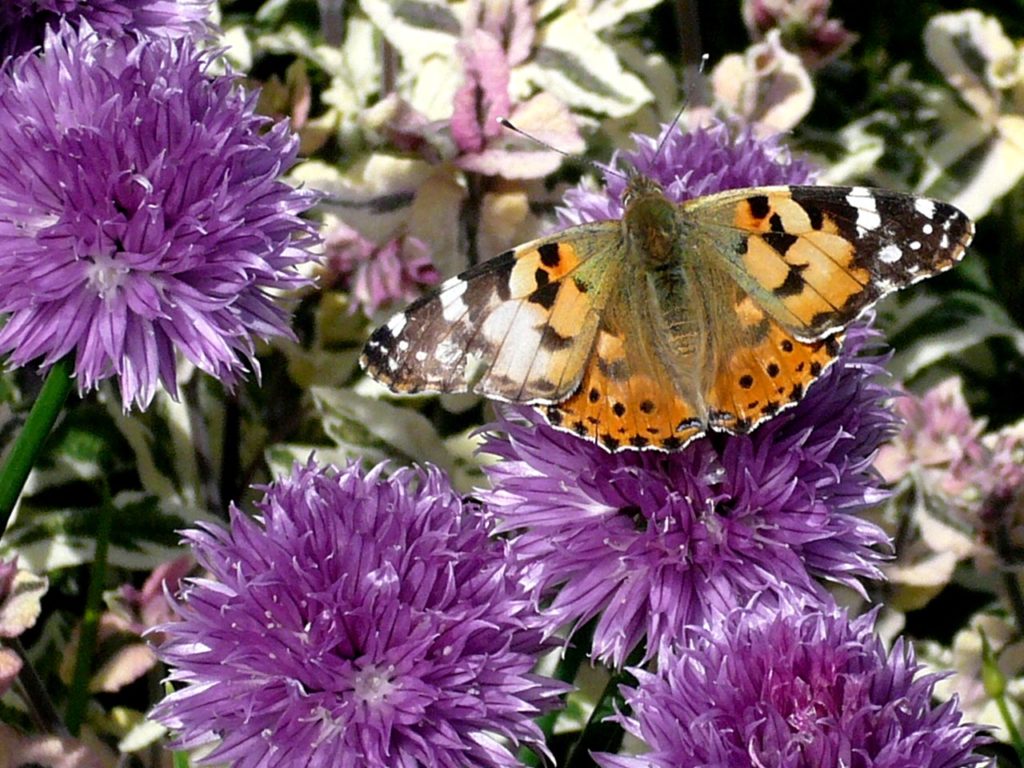
These painted lady butterflies are soon to arrive in the UK and their migration story is truly amazing. I read about it recently in Lia Leendertz‘s Almanac, here’s the excerpt:
“High above our heads, great clouds of painted lady butterflies are arriving on summer breezes. Or more accurately, they are just now passing through, because the painted lady has no real destination; its life is a constant journey.
This delicate butterfly with its orange and dark brown patterned, paper-thin wings has a monumental migration. The population we see in British and Irish gardens each year travels from tropical Africa to the Arctic and back again, the longest migration of any butterfly. However, no single individual will complete the entire migration. It takes up to six successive generations to make the entire 12,000km round trip each year, guided by some innate drive and the position of the sun: no parent has ever taught a painted lady butterfly the route. It was once thought that the butterflies died when they reached the north, but we know now that the return journey south is done at such altitude that no one had seen them travel.
What the painted lady is searching for in this endlessly restless life is perfect breeding conditions. They breed all year round, continually adjusting their latitude rather than ever changing their modus operandi to fit with the seasons. The painted lady chases summer up and down the northern hemisphere, hitching a ride on favourable winds, and trying its luck in every varying climate.
So when they arrive here this month, it is simply because we now have the good stuff: warmth but not too much, plenty of rain and lush growth. The male perches somewhere that a female is likely to pass by, and a courtship dance plays out, with up to eight butterflies fluttering in circles around each other. The lucky pair land and mate back to back, and the female lays her eggs on a promising bit of greenery- a thistle or an aster out of choice- before moving on to try again elsewhere, and again and again. Her eggs will soon hatch into caterpillars which will fatten up and pupate and then pick up the baton for their own leg of this endless migration”.
Text from Lia Leendertz‘s 2021 Almanac .
Images from my Sussex flower garden in a year when an unusually large number of painted ladies arrived in the UK.
